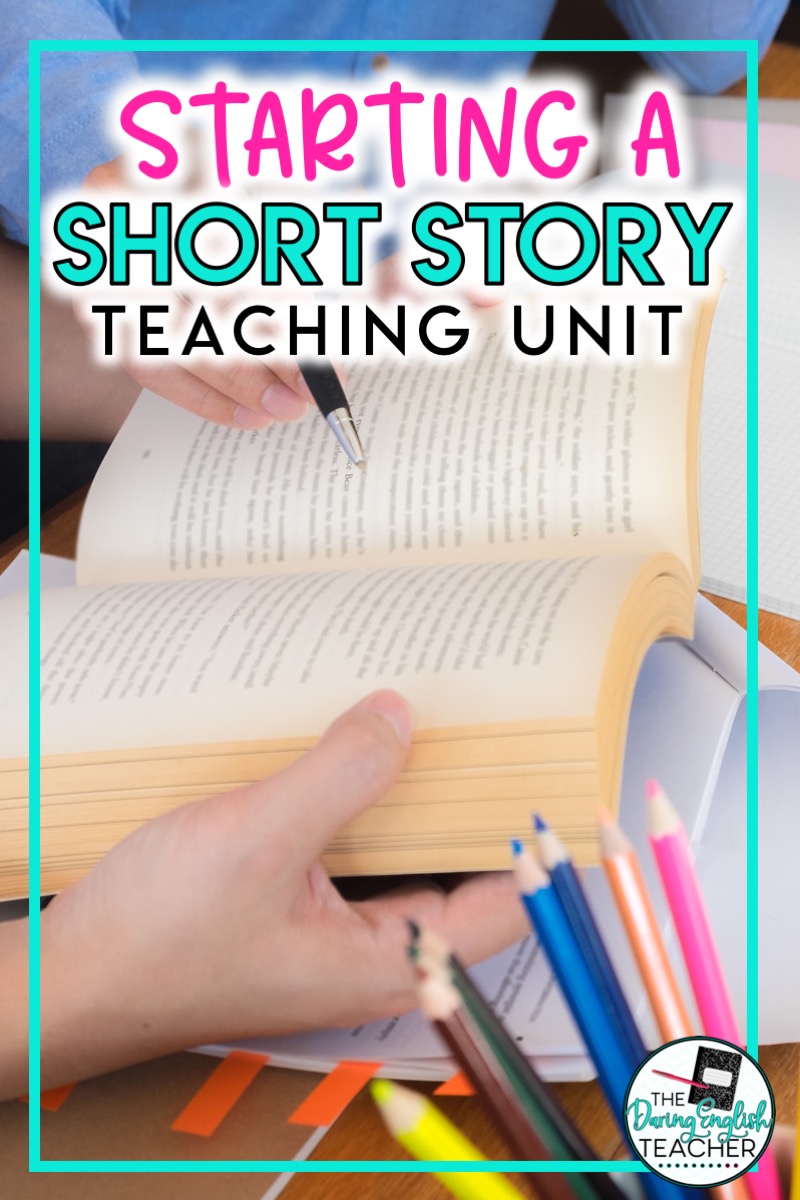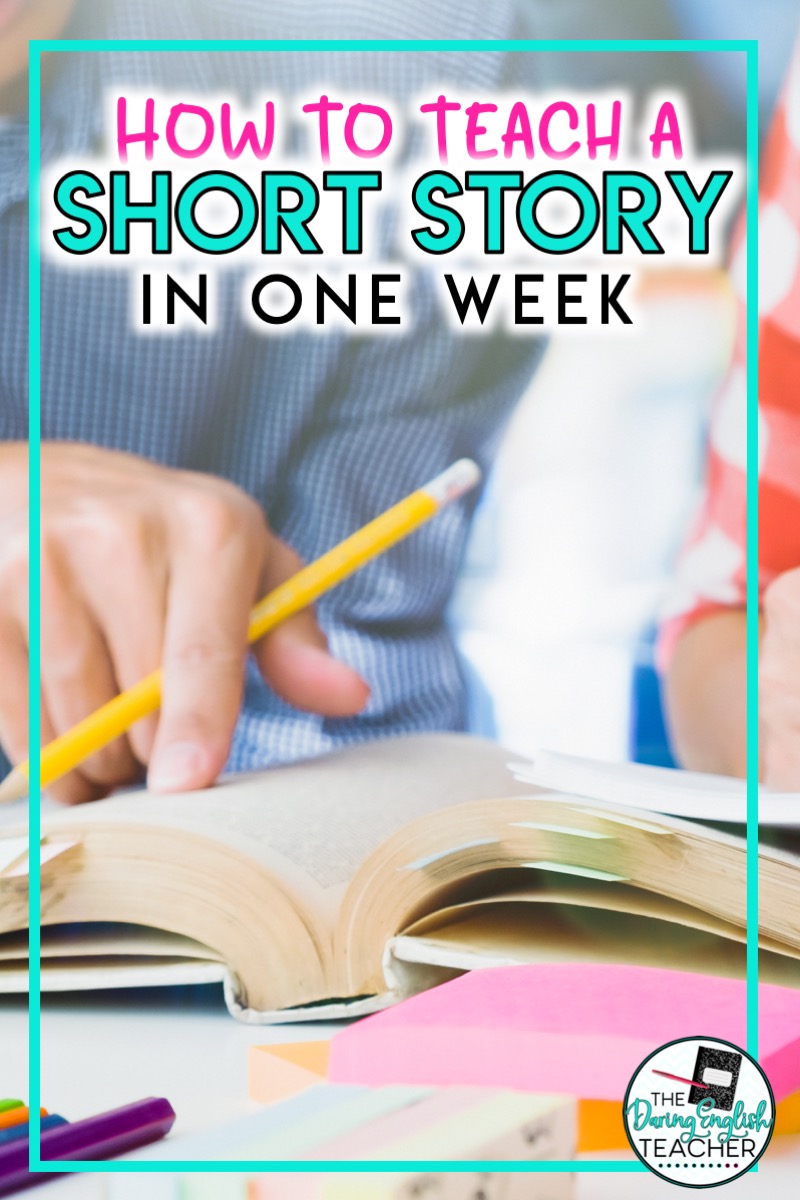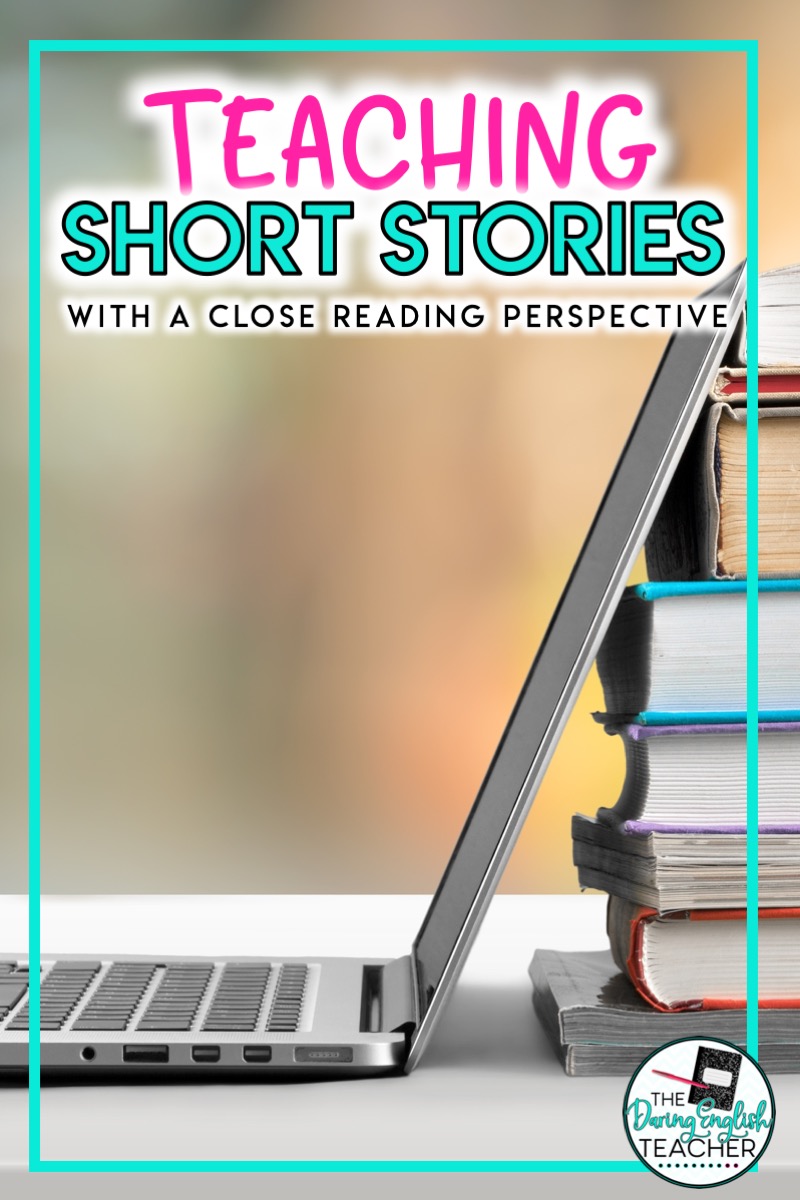One of my favorite units to teach is my short story unit. Teaching students about the elements of fiction and literary devices is so much fun. Helping students closely read the stories and analyze the stories on a deeper level is also extremely rewarding.
When I teach short stories, I typically focus on just one short story a week. We read the short story, go back and reread it, and really spend some time with it.
Here is a look at how I teach short stories in my secondary ELA classroom.
Getting Started with Teaching Short Stories
The first thing to do when starting a short story unit is to teach students about essential elements of fiction including plot, characterization, conflict, setting, etc. Once students have a fundamental understating of fiction elements, I like to engage my students in an elements of fiction escape room activity to review these elements. Since I teach high school and most of these elements are a review, I usually quickly review the elements of fiction and then spend a day with the escape room.
After the students understand the elements of fiction, I teach various literary elements, and we read our first short story together.
One of the most important things to remember when teaching a short story is to make sure that you aren’t throwing too much at students at once. Yes, we can analyze a story for its theme, symbolism, figurative language, conflict, and character development. Still, I think it is best to stick with just a couple of literary devices per short story. This way, students are less overwhelmed, and they can focus more on the analysis.
I typically start with my literary analysis sticky unit. This resource includes direct instruction materials and student activities. It also comes in a digital and print and digital bundle.
Teaching a Short Story in a Week.
With the first short story in the unit, I usually provide a bit more guidance and scaffolding. I also do a lot of thinking aloud to help model how to approach literary analysis. Here is a look at the breakdown for teaching a short story in one week.
Monday:
I first review some of the critical literary devices that we will focus on for that particular story. This can be done through quick direct instruction, a do now, or even a quick video. After that, I like to introduce the students to the story. I’ll do this by sharing pictures, providing context for the story, or providing them with some time to explore key concepts and important information. Then, we read the story.
Tuesday:
If necessary, we continue reading the story on Tuesday. I don’t like to read the story in one fell swoop, but I also try not to interrupt the reading every three lines to explain every single literary significance and nuance. It’s a tough balance.
Once we finish reading the story, I like to group the students together to discuss and review the story. During this time, I’ll have them work on a group poster analyzing critical ideas from the story, answering comprehension and analysis questions, or doing an activity related to the story.
Wednesday:
After spending two days with the text, I like to refocus my students and do some literary analysis. I will usually do this with one of the sticky note organizers from the literary analysis sticky note unit. Students will work either independently, in pairs, or in small groups to find examples of the literary elements we are focusing on.
Another way to do this is to assign students or student groups a passage from the text and analyze it. With my short story close reading units, I’ve carefully curated several passages from the short stories we read. Each passage includes a literary element of focus, and students go through the passage, read it, read it again, and then identify and analyze the literary element.
Thursday:
On Thursdays, I like to assign a literary analysis writing prompt. My short story writing assignments are never more than one paragraph, and before we build up to a paragraph, I only assign three sentences. You can read more about why I stick with the three-sentence writing assignment in this blog post.
Once I assign the writing prompt, it is important to make sure students understand the prompt and know how to answer the prompt. To make sure this happens, I usually have students annotate the prompt by underlining or highlighting the prompt’s action words and then circling the key ideas that students need to respond to.
After students have a good grasp on the prompt, I then have them work on a group brainstorming exercise to gather ideas and quotes. Group brainstorming, whether it be whole-class brainstorming or small-group collaborative brainstorming, is so beneficial for students. It helps struggling students build content knowledge and ideas. This is one of the many literary analysis scaffolding techniques I like to use in the classroom.
Friday:
On Fridays, we write. I have my students write in class. On those days, I rarely ever sit. I usually ping pong around the room, checking students’ work, providing them feedback as they write, and encouraging my students to keep up their amazing work.
Once I make it through a week, I start the process over with a new story. With each new story, I focus on different literary elements.





